In pondering the question: “Who should have access to the countless benefits and services that urban ecosystems provide?” We have put together a collection of eight first-person accounts that portray city dwellers’ dreams.
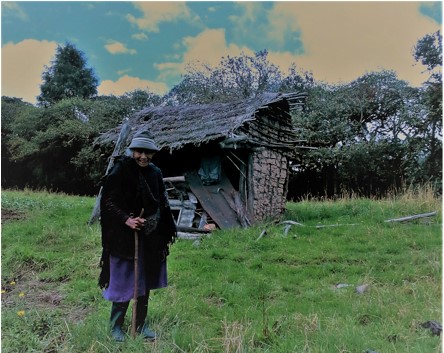
This series of Sketches of life explores both individual and collective human experiences as participants narrate their lives and reveal their innermost thoughts. These acts of remembrance provide a key to human identity and give meaning and substance to daily life (Cifuentes A., 2016).[1]
“I am Hernan Garcia, from the Barrancas-Quebrada el Cedro neighborhood located in Bogotá’s eastern foothills. I envision a movement that would revolve around the entire watershed basin … a territory that would take in both the brook and its basin … I dream about all of us forming a harmonious bond, one based on mutual interests and symbiosis with all the communities that live in the foothills, as well as with those located in the mid and lower basins which the Cedro brook flows through; I believe this is possible because part of this basin is located where the brook empties into the Torca stream, and further downstream into the Bogota River. So, I dream about this territory being held together by water: by crystal-clear water, by marvelous biodiversity. I also think that eco-tourism could contribute to the development of these communities.”
“My name is Neiphy. I’m 26 years old and I live in the Usme neighborhood in the southeastern part of Bogotá. The Tunjuelo River runs through it. I have heard that this river comes from a high mountain meadow. Being close to a river means that we live in a special place, but my kids don’t go out very much to explore the river and its surroundings because this a dangerous neighborhood. The only place for them to play outside is on a hilly area inside the housing project where only a few trees are growing.”
“My name is Jorge Enrique. I was born in 1953. I grew up in the country, but I had to leave during a period of political violence. I came to Bogotá with my family. I dream about Bogotá’s northern border being turned into a giant forest that would unite the eastern mountain range with the plateau below so that all the falling water could flow through it. This would make the eastern mountain range happy because it would be brought closer to the Majuy hills located west of the city. Right now, these two mountain formations can’t be together, but they are winking at each other and playing hide-and-seek, because they know that someday the giant forest will make their rendezvous possible.”
“My name is Enilfa. I live in a neighborhood in the southern part of the city, where I really don’t feel at home. Most of the houses are only half-built, and the streets are filled with dust that comes from the nearby open-air quarries. Progress means that some of the streets have been paved. The truth is that most of the people who live here don’t want to see any trees planted because they would only give the criminals with knives in their hands a place to hide behind. If the city wants to build us a park, we just want playground equipment and benches in it.”

“My name is Moses, but some people can’t pronounce it right and they call me ‘Moset’. I was born on April 4, 1928, and because of the political violence in the country I was forced to move to the northern part of Bogotá with my family. I remember that at that time everything was very pretty; we hunted capybaras, armadillos and wild turkeys. Every year we used to have barbecues with the corn we raised in our garden; it wasn’t just about agriculture, but about the ritual of being together. I have dreams that I try to thread together: I dream about a neighborhood where the young people and everybody else knows where they come from so they can work together within their own culture. I visualize a territory made up of waterways that starts where the water springs from the soil. I dream about us building a harmonious, mutually-dependent and reciprocal relationship with the communities in the mountains and with those who live along the banks of the Cedar Brook which pours into the Torca Brook and then into the Bogotá River.”
“My name is Ligia Hernan. Take for example the Bogotá River … you travel to other places and you find cities that have big rivers running through them. Why isn’t the Bogotá River the city’s most important feature? Instead, here you have the impression that the river is “just over there”, that it’s better to not even look at it, that it’s something of an eyesore, that it doesn’t even move … you should be able to walk along the river and come upon birds and fish. It’s something we’ve lost without even realizing it … it’s sad, isn’t it? So, what happened? People still strongly believe that they can only be living well if they have pavement beneath their feet.”

“I am the grandmother, Ichakaka Blanca. My words carry the most weight in the Council of Women here in Suba, located in the northwestern part of Bogotá. I belong to the indigenous nation of the Muiscas whose territory is called Bacatá (Bogotá). I have always lived in my territory. I am a daughter of Mother Lagoon because I was born in Aguascalientes in the region of Mother Lagoon, and it is where I still live. We lived here with my grandmother, Amalia, who was the doctor. She used traditional medicine from our territory to treat people. She applied the remedies herself. She also wove baskets and gathered all kinds of vegetables and medicinal plants to take to the October 12th Market Place where she bartered with them. It was a cultural exchange: she gave what she had brought for salt and cane sugar in return. Those are the things she would bring back home.”
“I dream about seeing our Pusmuyes (houses) being built. As the first nation and inhabitants of this sacred Muisca territory, we need to have our territory given back to us. We need to have sacred places where we can plant our crops; what I see every day in the city are just more and more playing fields for sports being built. We need to have a beautiful place so we can live in dignity as human beings—that’s what we need the most: a place where we can go and speak to our ‘Older Brother’; to our brothers and sisters, the trees; to nature; a place where we can rest.”
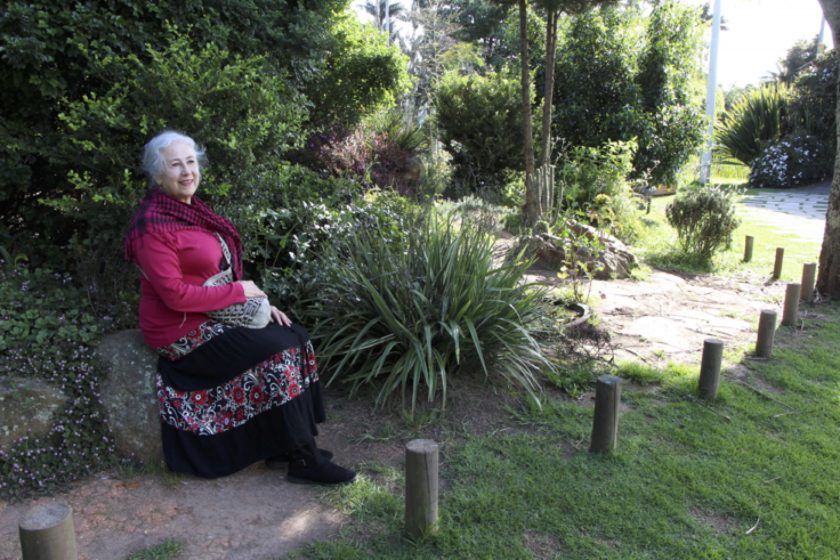
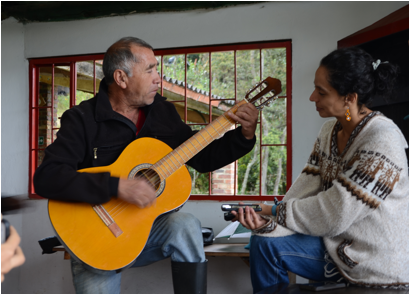
“My name is Edgar Armando Poveda-Romero. I’m not a native son to these parts [I was not born in Bogotá]. We came here as outsiders 50 years ago. I was born in a gunny-sack where they planted potatoes, 59 years ago, on November 23, 1957. We had milk, farmer’s cheese and eggs, which meant that the country people really didn’t need any money for groceries because we raised our own food with our own hands. As a community, we all belonged to the same family; we lived in harmony. If you were at your neighbor’s house at noon, you all shared lunch from the same pot, followed by a cup of hot chocolate. It was a big family-style meal. What they call Bear Mountain here represents love for this place, for life, for the will to live. In the future, I would like to see everybody interested in this place because they really care about it from the bottom of their hearts, not because they have to be thinking about the environment.”

The Sketches of Life Initiative includes real life-stories as told by inhabitants from different corners of Bogota. This Initiative, carried out by Bogotá Mountain Foundation volunteers, including Sandra Valencia, Johanna Gonzalez, Lina Prieto, Paula Faure, Daniela Robayo, Catalina Garcia, Benoit de Santignon, and Maria Alejandra Peña who recorded the observations which reveal that ecological services in a given place must be concerned with more than just the issue of nature itself: it must be remembered that these services are also loaded with meanings and memories that represent the soul of the community. Therefore, plans based solely on quantitative distribution and indicators are insufficient: the soulfulness of the area’s inhabitants must also be taken into account. In Bogotá, we have a long way to go in fulfilling this moral obligation: an obligation, which demands that nature and the landscape, make up part of a more equitable city. [2]
Diana Wiesner Ceballos
Bogotá
[1] Cifuentes, Andrés. 2016. Saberes de vida para dar vida historias de vida de comunicadores populares, Editor: Corporación Escuela de Artes y Letras. Bogotá, Colombia
[2] Translated by Steven Bayless
¿A donde puedo soñar? Ocho relatos de vida en Bogotá
Mediante unos relatos reales pongo a consideración la reflexión planteada respecto a la pregunta sobre ¿Quién debería tener acceso a los innumerables beneficios de los servicios de los ecosistemas y la naturaleza urbana? y la coincidencia con ocho historias y ocho sueños ciudadanos.

Historias de vida indaga de las experiencias humanas individuales y colectivas, tomando la interioridad del personaje para darle voz a través de su narrativa de vida; permite construir una visión de la sociedad en conjunto, además de acercarnos a la memoria, elemento clave para la identidad humana, la cual da sentido y contenido a la vida (Cifuentes A, 2016)[1].
Me llamo Hernán García Cerros Orientales, Barrio Barrancas-Quebrada el Cedro. “me imagino una dinámica de cuenca, el territorio entendido desde el agua y la cuenca, es importante entender desde donde nace el agua y donde desemboca, entonces yo sueño con que nosotros establezcamos un vínculo armónico, mutualista y simbiótico con las comunidades de los cerros, y de las comunidades de la cuenca media y baja de la quebrada el Cedro, porque parte de esta cuenca desemboca al Torca y luego al río Bogotá, entonces sueño este territorio conectado a través del agua y con agua impecable y una biodiversidad maravillosa y creo que desde el turismo responsable puede haber ese desarrollo en las comunidades.”
Soy Neiphy, tengo 26 y vivo en un barrio al suroriente de Bogotá, llamado Usme. Es un lugar que lo recorre el rio Tunjuelo que desciende de un paramo de donde me cuentan viene el agua de la ciudad. “A pesar de parecer un lugar único, mis hijos solo cuando se arriesgan con temor de la inseguridad llegan a ver el rio. El único juego que encuentran es un rodadero en la mitad de lo que dejo la urbanización casi sin árboles”.
Mi nombre es Jorge Enrique, “nací 1953, soy de origen campesino, en medio de la violencia política, nos desplazamos a vivir en Bogotá. El borde Norte de la ciudad lo sueño como un gran bosque que posibilite un encuentro entre la montaña, la planicie y que las aguas discurran, fluyan como transmitiendo ese deseo que de pronto tienen los cerros de oriente se acerquen con los cerros del Majuy en el occidente, y con un guiño se hacen esquivos y entre ellos saben, que por ahora no van a estar juntos pero, que de pronto pueden tener la posibilidad de encontrarse en un gran bosque”.
Me llamo Enilfa, vivo en un barrio de la zona sur en el que no puedo ubicarme bien, predominan casas en proceso de construcción, calles cuyo cielo se llena de polvo que viene de las montañas excavadas por las canteras que aún funcionan o que dejaron abiertas. El desarrollo trajo la pavimentación de algunas vías, y la verdad la gente que vive acá no quiere que siembren árboles, pues pueden ser lugares de inseguridad, donde se esconden los cuchillos para robar. Preferimos que si nos hacen un parque solo tenga juegos y bancas.

Me llamo Moisés, “a veces se traban y me dicen MONSIETE, nací El 4 de abril de 1928, llegamos por la violencia desplazados a Bogotá por la zona norte. Me acuerdo que todo eso era muy bonito, había algo que cazar como Borujos, Armadillos, Pavas . Todos los años hacíamos asados con las mazorcas de la huerta; no solo ha sido un tema de agricultura, sino también un rito de compartir. Yo tengo sueños que he tratado de ir enlazando, sueño un barrio donde los jóvenes y todas las personas reconozcan el valor de su origen y se trabaje a partir de una cultura propia. Imagino un territorio entendido desde el agua y la cuenca desde donde nace el agua. Sueño con que nosotros establezcamos un vínculo armónico, mutualista y simbiótico con las comunidades de los cerros, y de las comunidades de la cuenca media y baja de la quebrada el Cedro, porque parte de esta cuenca desemboca al Torca y luego al río Bogotá”.
Ligia Hernán “por ejemplo el río Bogotá… uno va a otras parte y uno ve que dentro de las ciudades pasan ríos grandes, ¿por qué aquí el rio Bogotá no puede sentirse dueña de la ciudad? El rio esta como por allá, como que mejor no lo miro, esa destrucción que uno ve ahí , como que no se mueve nada, uno esperaría ver al lado del rio pajaritos, peces. Y eso es como una perdida que uno no fue consciente de que se dio, es como triste ¿no?, qué sucedió… se sigue pensando que lo que es bueno es que la gente vive bien porque tiene el piso pavimentado. ”

Soy la abuela Ichakaka Blanca. “Soy la palabra mayor aquí en el consejo de mujeres de Suba, al noroeste de Bogotá, soy la abuela Muisca del territorio acá de Bacatá. Siempre he vivido aquí en mi territorio. Soy hija de Madre Laguna, pues nací en la Laguna Sagrada de Aguascalientes y aquí estoy. Nosotras vivíamos acá también con mi abuela Amalia, que era como la médica tradicional de territorio Y era la que daba la medicina, también era tejedora de esteras y también ella recolectaba mucho, todo lo que era la verdura y todas las plantas medicinales pa’ llevarlas a la plaza del 12 de octubre, para hacer el trueque, el intercambio cultural de todo esto; lo que no había acá, más que todo era la sal y la panela, así que era lo que ella traía de allá.
Me sueño una construcción de nuestros Pusmuyes (casas), y como primeros nativos y vivientes de este territorio sagrado Muisca necesitamos nuevamente nuestro territorio. Necesitamos tener espacios sagrados donde sembrar, pues cada día amanecen en la ciudad mas canchas deportivas. Nosotros necesitamos tener un espacio lindo, digno, como seres humanos para vivir, eso es lo que más necesitamos, ese espacio donde nosotros podamos ir a hablar con nuestro hermano mayor, con nuestros hermanos árboles, hablar con la naturaleza, poder descansar”.


Mi nombre es Edgar Armando Poveda Romero, “no soy rasal de aquí de la región, nosotros lléganos aquí como forasteros hace 50 años, nací en unos costales en un campamento donde se cultivaba la papa, hace 59 años, el 23 de noviembre de 1957. Había leche, cuajadas, huevos, es decir, el campesino prácticamente no necesitaba tanta plata para completar la canasta familiar, porque la mayoría de producción alimentaria se generaba aquí, del trabajo de los campesinos y en el tema social, todos éramos una sola armonía, una sola familia, llegaba al medio día a la casa del vecino, así estuviera almorzando y siga para la olla del fogón, y le compartían, tómese un tinto un cacao, y se participaba de lo que estaban compartiendo en familia… La montaña del oso representa una convicción por el amor del lugar, a mi vida, las ganas de vivir, y a futuro me gustaría ver un conglomerado de personas que a conciencia valoren este lugar, no por necesidad del tema ambiental, sino por convicción”.

En la iniciativa llamada Historias de Vida, narraciones reales de habitantes de distintos rincones de Bogotá la Fundación Cerros de Bogotá (www.cerrosdebogota.org), grupo de voluntarios ciudadanos, liderada por Sandra Valencia; Johanna González, Lina Prieto, Paula Faure, Alejandra Peña recogen los relatos que dan cuenta de que los servicios de la naturaleza van mas allá y están cargados de significado y memorias que representen un lugar del alma de esa comunidad. Por lo tanto, hay que ir mas allá de pensar en distribución e indicadores cuantitativos, hacia indicadores desde el alma de sus habitantes. En Bogotá, estamos lejos de cumplir ese imperativo moral para que la naturaleza y el paisaje participen en la noción de ciudades justas.
Diana Wiesner Ceballos
Bogotá
[1] Cifuentes, Andrés. 2016. Saberes de vida para dar vida historias de vida de comunicadores populares, Editor: Corporación Escuela de Artes y Letras. Bogotá, Colombia

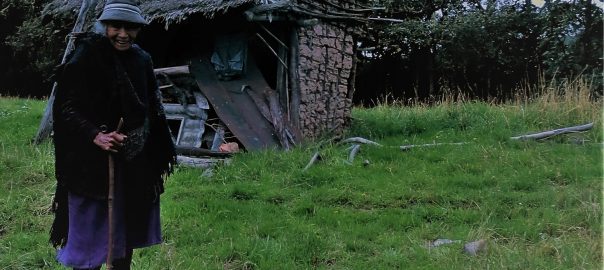






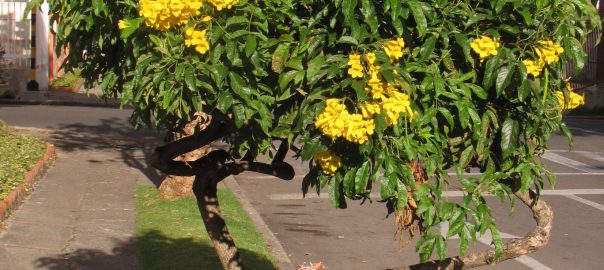
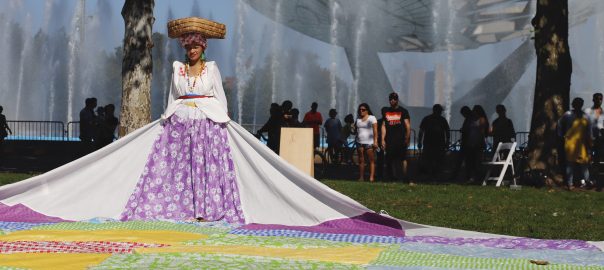
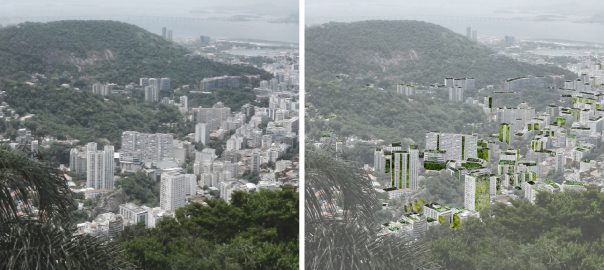
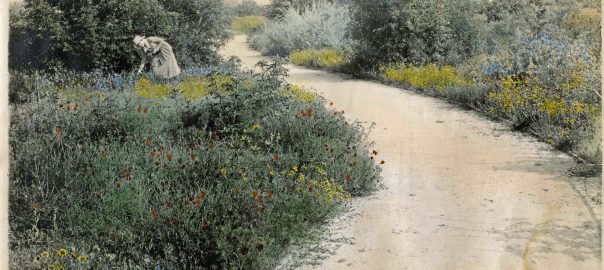
Soy una gran admiradora de Diana y su trabajo. Comparto su visión de autogobierno en las comunidades que se expresan en este artículo. Espero que cuando nuestros hijos sean adultos esa visión sea una realidad.
I am a great fan of Diana’s work. I share her vision of self-government in the communities that express themselves in this article. I hope this vision will be a reality by the time our children are adults.
La lecture des paroles des habitant-e-s a été pour moi une façon concrète de vivre le paysage des Cerros de Bogotà. Ces paroles orientent vers des projets judicieux et concrets.
Par exemple, Ligia Herman rêve d’un fleuve Bogotà qui serait au cœur du paysage urbain de la métropole.
Le rêve de Neiphy, habitante de Usme, désigne « la métaphore de la source née dans une prairie des hauts plateaux andins » évoquant ainsi le caractère précieux de sa rivière Tunjuelo.
Rêvant moi-même d’un projet de paysage comparé entre Bogotà D.C.et le Grand Paris, j’ai souhaité vivre de manière sensible le caractère monumental et fragile du Paramò de Sumapaz, avec ses frailejones, comme expressions d’une relation primordiale de ces territoires avec la métropole de Bogotà.
Jacques Deval, Architecte de paysage
This is a beautiful initiative in a very important moment for Bogota, when we are defining the future of the city and how it will work with nature and its social tissue. Its amazing to see this stories and to know about the people that are living here.
It’s amazing to read about the relationship between people and nature in Bogota. They have much knowledge to impart to planners and politicians about what “should” happen in the areas they live.
We’ve conducted similar surveys with people in struggling villages in rural Japan. Their circumstances are markedly different, but there are strong correlations between their sentiments, and those found here. Knowing that is hopeful.
It is heartening to read these absolutely beautiful and deeply important reflections. Thank you, thank you, thank you, Diana and friends.
Keep working with this thread of inquiry!!!
Desde los relatos de esas personas, arraigadas a sus territorios con recuerdos, sueños y ensoñaciones, se siente un latir fuerte de quienes mantienen la sabiduría de lo esencial en riesgo… Dejémonos llevar por esos deseos, al igual que la naturaleza se retuerce y responde impacable a nuestras necedades, también se halla presta a manifestar su complejidad poderosa en pro de la recuperación. Me siento honrada de haber podido escuchar muchas de estas voces, historias que me llevaban a otros lugares y me contagiaban de fuerzas pasadas. Gracias a mis compañeras y a la iniciativa. Seguiremos trabajando para ayudar a crear esos mundos otros posibles, cobijados en las almas de tantos humanos.
Magnificos relatos sobre nuestros sueños acerca de la gran capital. En Villavicencio donde vivo, tambien impulsamos unos conversatorios de los vecinos cerca de los humedales que vemos en retroceso por obra de urbanizadores y la pobre accion de las entidades encargadas de proteger nuestras gentes y su territorio.
Que gran trabajo. Un reconocimiento a la tradición oral como una voz perdida en la memoria. Nada más importante que saber de donde llegamos como vivimos y como nos proyectamos. Grandes historias que no debemos olvidar ni perder, éstas nos acercan y conectan a esa forma de vida ancestral que todos queremos y no sabemos como recuperar en esta ciudad de asfalto. Historias que nos dejan grandes cuestionamientos y nos conectan con esos lugares naturales que recorrieron y vivieron, y que hoy la ciudad y la modernidad los transforma día a día
Que inspirador oir digo leer{estaba sonando y viendo los lugares que, un dia visite,en mi juventud} si leer estas historias que son el verdadero amor a Bogota…salen del corazon de los lugarenos….Merecen todo respeto y consideracion
La planeacion urbana, dirigida por técnicos y expertos, la mayoría de las veces ignora el objetivo fundamental: la población y sobre todo a los oriundos y pobladores naturales y originales del territorio. Por lo tanto, este trabajo escucha y difunde la valiosa opinión y sentímientos de los humildes que más sienten la belleza natural de los cerros.
Qué gran trabajo entender el territorio y sus dinámicas en la voz de los que todos los días lo están construyendo, formando e interviniendo. Escuchar la historia y apreciar los relatos nos lleva a un regocijo de querer seguir trabajando por el territorio con sus comunidades para que algún día se pueda ajustar esa brecha abismal entre desarrollo económico , social y ambiental.
El urbanismo en las grandes ciudades se olvida que las personas tienen nombre propio, tienen sueños en los que basen su búsqueda de la felicidad. Es hora de dejar de planear para autos y hacerlo para la felicidad de las personas. Ese día podremos ir dónde el vecino y si llegamos al almuerzo saber que somos bien venidos, en esa ciudad ideal tendremos más árboles atravesados en nuestro camino al trabajo, y terminaremos reconociendo que hoy mejor restaurante que un asado al pié de la huerta de vecino compartiendo la alegría de la cosecha.
Relatos interesantes de la relación de estas personas con su entorno valorándolo y reflejan la transformación y sus temores
Es realmente motivante recibir tantos comentarios animando el trabajo de un equipo que hemos conformado para darle voz a las personas que habitan diversos rincones de los cerros de Bogotá, pues usualmente el ciudadano común mira los barrios con una observación peyorativa hacia los barrios de origen informal.
Darle valor y poner en perspectiva la noción de naturaleza de diversas voces permite reflexionar, y aprender de estas personas que pueden tener mas claro el papel de la naturaleza en la ciudad.
Gracias al equipo Historias de Vida: Sandra Valencia, Johanna Gonzalez, Lina Prieto, Paula Faure, Daniela Robayo, Catalina Garcia, Benoit de Santignon , Maria Alejandra Peña, Natalia Gonzalez, Elizabeth Barragan .
After living and traveling around, and in the midst of the natural chaos we face this times, letting the people’s voices be heard is of ultimate importance. Regardless of their inner motives and life history, they are bringing up a simple and beautiful response of what the author-Diana Wiesner- pose: we all should have access and contact with nature, is in our DNA, is in our blood and humanity, is our feeder and our healer. Thanks to Diana and her organization for such a wonderful initiative.
Que precioso trabajo el en los relatos!! La fundación Cerros de Bogotá es una fuente de inspiración para los chilenos!!! Siempre estamos buscando como replicar las ideas y metologias que aplican!! Felicitaciones!!!
Dianis, es historia, reflexión, motivo. Desde las enseñanzas de tus antepasados hasta la se tus padres, como el agua, se viene gestando en ti han búsqueda incesante por encontrar los hilos mágicos que una la naturaleza con la naturaleza humana, espresada en el arte, artesanía, paisajismo, arquitectura,. Cualquiera y sociedad o ecourbanismo. Vez en las pequeñas cosas la grandeza de un creador y como creadora quires hacer honor y seguir sus pasos. Esas pequeñas y grandes historias de la gente que otris no ven, ni escuchan, o más bien si lo hacen bajo la pantomima de que están completamente comprometidos con ellos, con su entorno. Puede decir más, pero solo me limitaré a decirte una vez más, de lo cual nunca me cansaré, felicitaciones.
These stories give us light on the importance of having a wider understanding on the meaning of preserving the mountains of Bogota and natural surroundings. It involves the inhabitants wisdom and dreams. All the initiatives working toward this goal as Fundacion Cerros de Bogota are vital to consolidate and help those dreams come true.
Gracias por compartir estás historias de vida que alimentan y sustentan el trabajo con las comunidades y que nos acercan a las realidades, planes y deseos de los pobladores y vecinos de áreas claves para el cuidado del ambiente en esta hermosa y caótica ciudad. De nuevo gracias y felicitaciones por tan bonito trabajo. Un especial reconocimiento para las voluntarias.
Powerful and beauty. Hearing tha voices you can imagine the landscapes … Beautiful people arranged to their soul and soil.
Hope to visit Bogota. Congratulations to the team and work of young volunteers.
Nuestra realidad bogotana la definen los cerros orientales. Nuestra vida es moldeada por los servicios que ofrecen los ecosistemas de nuestras montañas. Somos lo que los cerros nos invitan a ser. Testimonios poderosos!
In order to create a new cultural landscape its important to know the real meaning of “the place” from the inhabitants who are the community itself.
The older people as the “abuela Ichakaka” are the ones who knows the true history and tradition of the Native American territory, a territory that current society must respect.
Poética y hermosas historias., reflejan realidades comunes de las ciudades Latinoamericanas .